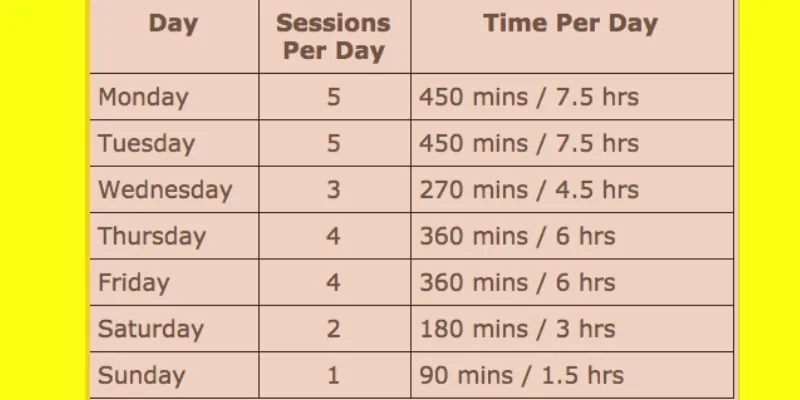Why Set Goals?
Forming a habit, getting tasks done, achieving, learning and finishing something, are a few reasons why goals are set.
The size of the goal doesn’t matter.
A goal I set myself a few years ago was to improve my writing skills. Since leaving school, I haven’t done much writing and it had become a challenge to write anything that was over a couple of hundred words long.
As I had a need for over 500 words to be written regularly, a goal was set to write 500 words for 30 days.
Setting a goal was easy enough. Now I had to work out how to make sure the goal was achieved.
The overall goal was to write 500 words a day over 30 days. That was the big goal. To achieve this, there had to be smaller goals, which you could call milestones.
In this instance, the smaller goal or milestone was to tackle each piece of writing separately. So, each day, the following had to be done:
Select Topic To Write about
Most days, there were topics I desperately wanted to write about. For days where there wasn’t, I had a list of topics to choose from. The list was created at the start when the goal was initially set.
Write About The Topic
Once a topic was selected, 500 words had to be written.
Initially, this took a while as it no longer became about just writing the required amount of words, the structure of what was being written had to be taken into account.
Approaching each piece of writing like a school assignment helped; where there had to be a beginning, a middle and an end.
Counting Words
There were some days where counting words wasn’t necessary as it was clear the daily goal had been achieved. Then there were days, when it was a struggle getting up to the required number of words.
Here’s what happened when I failed to meet a day’s goal. It was written in the present tense.
I missed doing my 500 words yesterday so I am doubling up today and doing 2 lots of 500 words.
Why was the goal missed?
Last week, I was on task and followed the timings I had set myself and was able to get a lot done.
Over the weekend I did some work as well.
Why did I opt to work over the weekend?
Was it because I was trying to get ahead or was it because I was bored and had nothing else to do? or was it because I was worried there were two days in the coming week that was going to disrupt my working pattern?
No matter the reason, the goal was missed because I had worked for long periods of time in the preceding days without enough breaks and I was tired.
The long hours had taken its toll on me and I needed to get extra sleep.
Not completing the daily goal also happened because I did not follow the 20 Mile Principle.
This principle says you make a plan on tasks you need to accomplish and you stick to it. By doing this, you slowly chip away and before you know it, you would have achieved your goal.
There is another principle I use, which is to do something every day on my business.
With this principle, it's trying to get you to form a habit. By doing something everyday, you also chip away at tasks and accomplish the priorities you have set yourself.
I am trying to follow both principles by focusing on the tasks I have set myself to accomplish for the week and by doing something every day.
This includes doing something over the weekend, to either mop up the week that was or to get ahead of the upcoming week.
What I realised from missing my goal is that working flat out 7 days a week doesn’t work for me. It just gets me tired and sets me back a couple of days each week.
In reality, with all the tasks that need to be accomplished, working 7 days may be needed and this is where the ‘20 Mile’ and ‘do something everyday’ principles comes into play.
Using the Pomodoro Technique as a starting point, where you work for a set number of minutes and then take a break, I have expanded that by looking at the week as a whole.
Each day would have a certain number of sessions, which would be based on what needs to be achieved that day. This also means some days would have more sessions than others.
A session is how much time would be spent working on something without distractions, followed by a break.
To explain this, let’s outline how this would work in a week. We’ll define a session as lasting for 90 minutes. This is made up of 70 minutes of working on something, followed by a 20 minute break. We’ll also limit the number of sessions a day to a maximum of 5.
An example of a working week could be structured as follows:
You can see the number of sessions varies by day, this is to take into account meetings, appointments and other tasks that needs to fit into a week.
Deciding the number of sessions to have in a week is based on what needs to be done within a week.
For the writing goal, sessions were needed over the weekend as those days were included in the 30 days.
It took quite a few days into the 30 days of writing to figure out how I could break each day into sessions and dedicate some of these sessions to writing.
Once I started doing this, I found I was able to achieve my goals each time. It also allows me to follow both the ‘20 Mile’ and ‘do something everyday’ principles.
Plus, I can fit meetings into days I have fewer sessions and not feel like I am falling behind.
In case you are wondering if I was able to achieve the goal of writing 500 word a day for 30 days, the answer is yes, and it got extended to 60 days.
Get updates from SloppySuccess #makeastart
in your inbox



